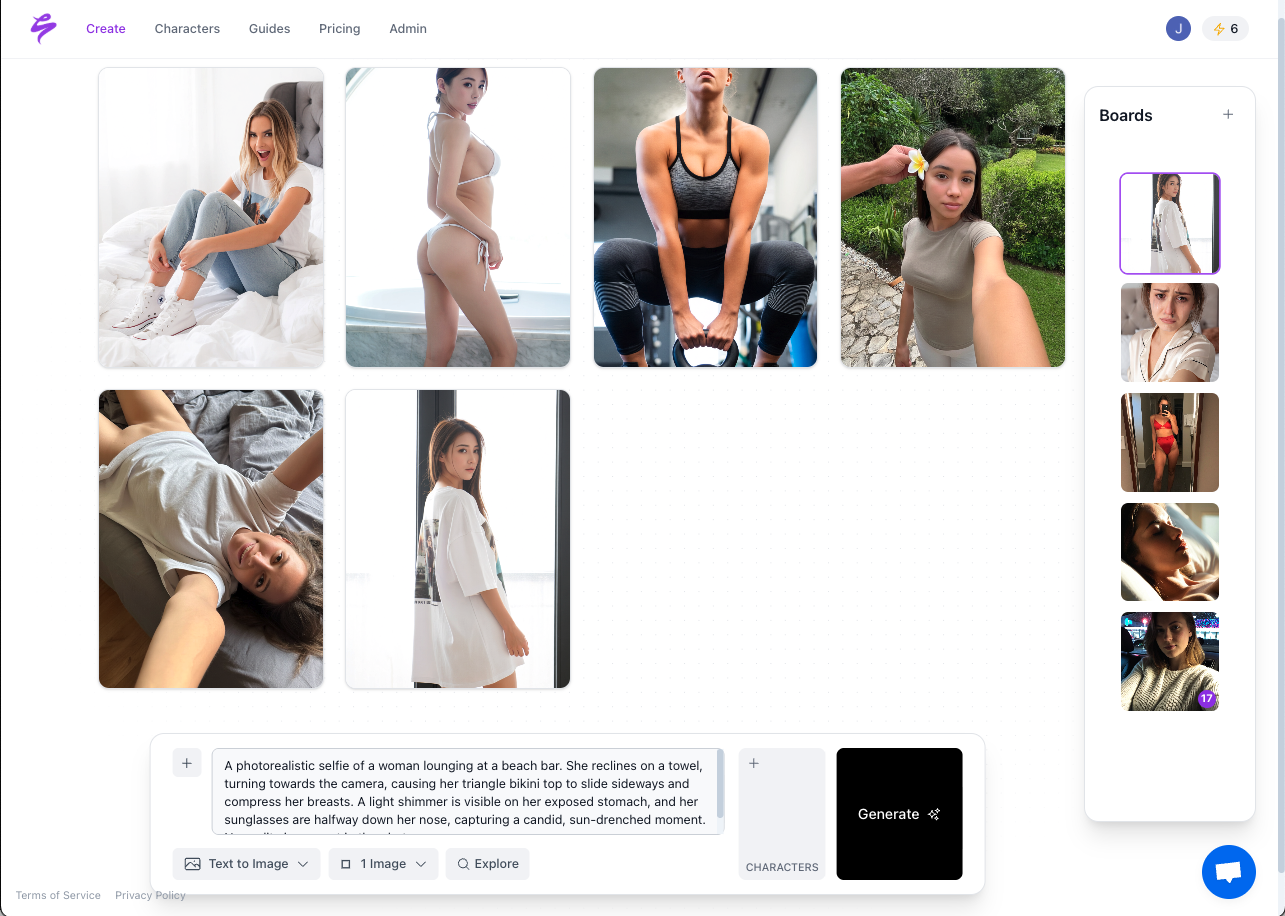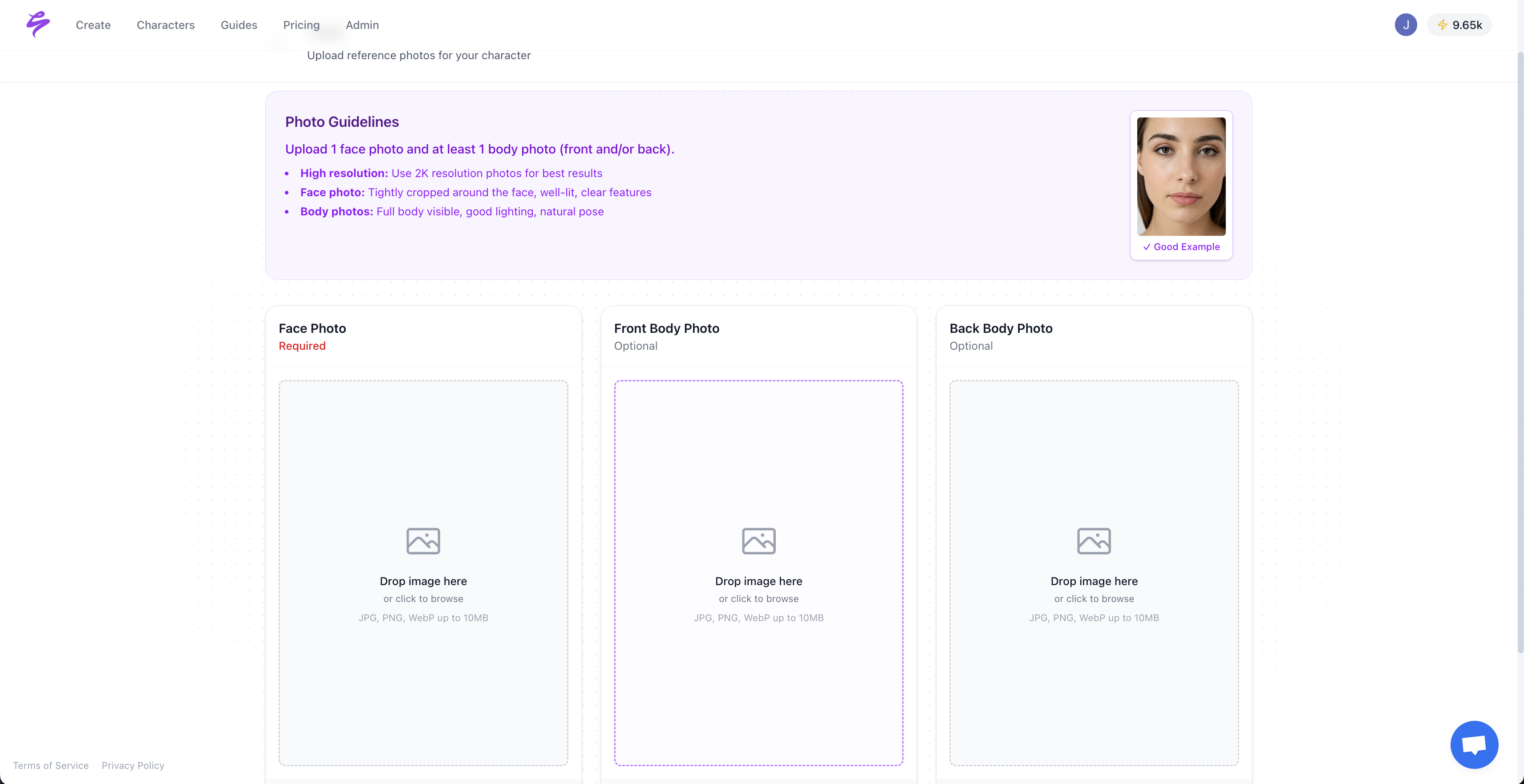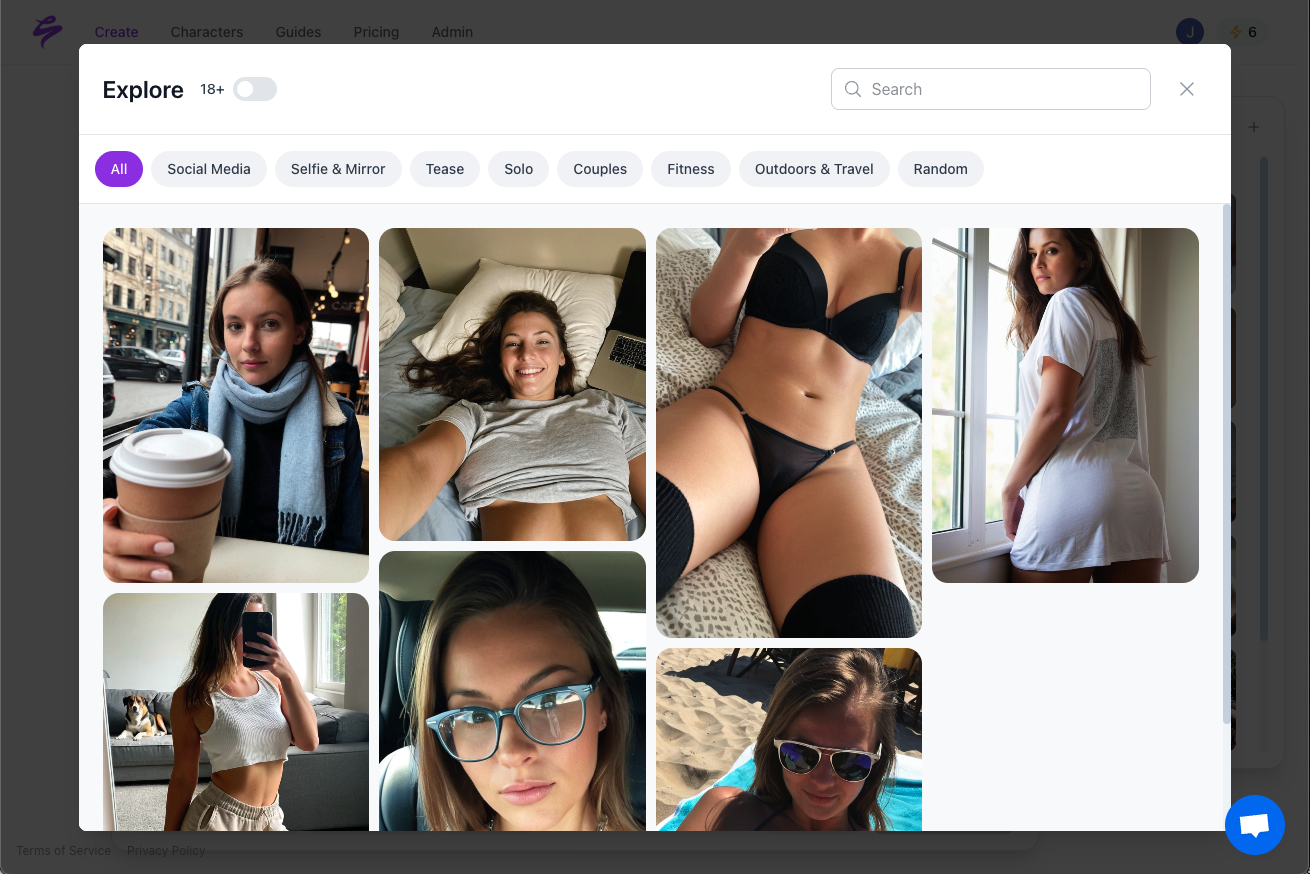Key Takeaways
- Automated video creation from images helps creators keep up with rising content demand while reducing burnout.
- Hyper-realistic AI output protects audience trust and supports stronger monetization.
- Efficient workflows and templates allow creators to produce large volumes of consistent content quickly.
- Advanced AI features improve storytelling, engagement, and creative range without extra production costs.
- Scalable image-to-video systems expand revenue opportunities across platforms and funnel types.
- Strong privacy controls and brand safeguards are essential when using AI with creator likenesses.
- Sozee.ai focuses on creator-specific needs, including realism, privacy, and monetization workflows.
The Creator Economy’s Content Crisis: Why Automated Video is Essential
The modern creator economy operates on a clear equation: More Content = More Traffic = More Sales = More Revenue. Yet creators face an ongoing challenge, as audiences demand near-constant content while creators remain human, with real physical and mental limits. This structural imbalance creates what many call the Content Crisis, where demand for content outpaces supply by an estimated 100 to 1 ratio.
This crisis shows up as burnout from relentless posting schedules, agencies struggling to maintain consistent content pipelines, and virtual influencer projects that take months to develop while still lacking visual consistency. Traditional video production requires extensive planning, equipment, locations, and post-production time. These resources do not scale easily with audience expectations.
Automated video creation from images offers a practical solution to this gap. This approach turns static visuals into dynamic narratives with AI, so creators can separate their content output from their available time and energy. Creators can produce engaging video content at significant scale while maintaining quality and authenticity, which are critical for monetization in a competitive digital landscape.
Strategy 1: Prioritizing Hyper-Realistic AI for Image-to-Video Transformation
The foundation of effective automated video creation lies in realistic output that supports audience trust and brand authenticity. Sora 2 and Veo 3 rank among the most realistic AI video generators for 2025, with strong prompt adherence and built-in audio generation. Kling AI focuses on cinematic results, with attention to emotional depth, lighting, and dramatic tone for professional-feel outputs.
Realism now plays a central role in the creator economy. Audiences have become more skilled at noticing AI-generated content, and visuals that appear obviously synthetic can reduce trust and engagement. Kling AI includes filmmaker-friendly features such as 1080p quality, up to 10-second shots, lip-syncing, and shot extension from an end frame, which supports creators who need professional-grade production quality.
Sozee.ai focuses on hyper-realistic likeness recreation directly from images. With just three photos, Sozee can reconstruct a creator’s likeness with accuracy that allows generated videos to closely mirror real shoots. This level of fidelity matters for creators who depend on visual authenticity for monetization, especially in niches where audience connection relies on consistent and believable representation.


Creators who want to convert images into realistic videos can set a strong foundation by choosing tools that balance visual quality, likeness accuracy, and control over the final output. Get started with automated video creation today.
Strategy 2: Optimizing Workflows for Rapid Content Production and Consistency
Efficient workflows support scalable content creation. Creators and agencies that streamline their production pipelines can meet constant demand while protecting quality standards. Imagine V3 focuses on quick and consistent generation with stable results and a beginner-friendly interface, and Runway AI offers real-time processing, flexible use cases across creative and social projects, and a user-friendly design.
Effective workflow optimization reduces friction at every step in the content process. Important improvements include:
- Shorter setup and production time.
- Automation of repetitive tasks.
- Consistent output quality that requires minimal manual correction.
- Direct publishing to key platforms.
Sozee’s workflow centers on monetizable creator needs and follows a clear path:
- Upload a small set of photos for likeness creation.
- Generate initial image and video concepts.
- Refine prompts, poses, and scenes.
- Package and export sets of content for specific platforms or funnels.
- Approve and schedule content in batches.
- Scale by reusing high-performing prompts and looks.
This system allows creators to produce a month of content in a single focused session while maintaining appearance consistency across every asset. The platform saves and reuses prompts, styles, and brand looks, so creators do not need to rebuild successful aesthetics from scratch.

|
Feature/Benefit |
Sozee.ai (Creator Economy Focus) |
General AI Video Generators |
|
Input for Likeness |
3 photos with instant reconstruction |
Heavy model training and specific footage |
|
Output Realism |
Hyper-real look that matches photoshoots |
Variable quality, often a clear AI-generated look |
|
Content Consistency |
Stable across weeks, months, and styles |
Often lacks long-term consistency |
|
Monetization Focus |
Built for creator funnels, including SFW, NSFW, and PPV |
General creative and marketing production |
Strategy 3: Enhancing Narrative and Engagement with Advanced AI Features
Advanced AI features can lift storytelling and audience engagement in image-to-video projects. PixVerse offers character-to-video, advanced effects, sound and speech, lip sync, and multiple visual styles. Kling AI supports end-frame controls, adjustable creativity, camera settings, and negative prompts for detailed editing.
These capabilities help creators go beyond simple image animation. Shot extension and end framing help maintain narrative flow and visual coherence across multi-part content. Camera controls support cinematic movement, which can hold audience attention across longer viewing sessions.
Sozee gives creators broad creative range through unlimited digital costumes, props, and environments without physical production limits. The platform includes a curated prompt library based on high-converting concepts, so creators can build on proven content structures while adapting to niche audience requests. This mix of creative flexibility and performance data supports both artistic goals and commercial results.

Creators who combine these features with clear narrative planning can design content that feels polished and engaging without adding manual production work. Start creating AI-powered content that matches your brand goals.
Strategy 4: Scaling Production for Monetization and Audience Growth
Image-to-video AI allows creators and agencies to expand content output beyond human production limits, which directly affects reach and revenue. Automated workflow tools such as Zapier can streamline repetitive content production steps, and Runway Gen 4 supports creative automation and workflow integration for batch production across social platforms.
Large-scale production requires more than simply generating extra content. A strategic approach distributes assets across multiple platforms and monetization channels, including:
- SFW-to-NSFW funnel exports tailored to different audience segments.
- Themed PPV drops built around specific events, holidays, or narratives.
- Promotional assets optimized for TikTok, Instagram, X, and other platforms.
- Bundles of content that support memberships and subscription offers.
Maintaining consistent quality while increasing volume gives creators an advantage on algorithm-driven platforms that reward frequent posting.
Sozee helps creators operate as high-output content engines by removing many physical and logistical constraints from production. Agencies gain predictable content pipelines and revenue streams. Top creators can post more often without additional filming, and virtual influencer builders can publish at the pace of media companies while keeping a stable on-screen identity.

Monetization-focused workflows in Sozee link higher output directly to revenue through funnels, PPV offers, and content bundles. Scale your content production while keeping control over quality and brand.
Strategy 5: Maintaining Brand Authenticity and Privacy in AI-Generated Content
Brand consistency and privacy protection sit at the center of responsible AI-generated content. AI video tools now support brand consistency with template libraries and style transfer features that help agencies and creators maintain a recognizable aesthetic. Customizable templates, style guides, and ongoing training with brand-approved imagery also help preserve brand authenticity.
Privacy concerns increase as creators build valuable digital assets around their likeness. Unauthorized use or model contamination can threaten both brand equity and competitive position. Elai, for example, enables creators to use lifelike avatars for branding and persona-driven video content, which expands options for automated virtual influencer and spokesperson videos.
Sozee operates on the principles of hyper-realism and privacy by design. Likeness models remain private and isolated and do not feed into general training sets. This structure gives creators clear control over how their image appears and where it is used. Internal approval workflows support agency brand standards, and SFW-to-NSFW funnel exports allow monetization across different audience segments without sacrificing oversight.
Creators who value long-term brand building can treat Sozee as a controlled environment for image and video generation, with privacy and authenticity built into the process. Protect your likeness while scaling with AI-generated content.
Frequently Asked Questions About Automated Video Creation from Images
How do AI image-to-video tools ensure the realism of generated content?
Top tools use advanced generative adversarial networks and diffusion models that focus on details such as lighting, shadows, and micro-movements. These systems learn from large sets of real-world examples to model natural motion patterns, facial expressions, and environmental interactions. Many platforms also add physics-aware modeling, which improves object behavior and camera movement. Realism still varies by provider, but the leading options can produce content that looks close to traditionally filmed footage.
Can I maintain my brand’s distinct visual style and consistency across multiple AI-generated videos?
Yes, many AI video generators now support brand consistency with reusable style bundles, custom templates, and detailed input controls. Strong platforms let you lock in lighting preferences, color grading, composition styles, and camera angles that define your brand visual identity. Consistency comes from using templates that preserve these core elements while still allowing variation within those guardrails.
What are the key performance indicators (KPIs) to track when using automated video content for monetization?
Important KPIs include engagement rates such as likes, comments, and shares, completed view rates, and click-through rates on calls to action. Conversion metrics such as PPV purchases, subscriptions, and upsells show how content contributes to revenue. Cost per video created and revenue per piece of content help measure efficiency. Many creators also review audience retention curves and platform-level performance to refine both content and posting strategies.
How does automated video creation address the Content Crisis in the creator economy?
Automated video creation helps address the Content Crisis by separating content output from a creator’s physical availability. Instead of relying only on live shoots, travel, and manual editing, creators can generate diverse, high-quality content in concentrated sessions. This model allows weeks or months of content to be produced at once, reducing burnout while increasing supply to match audience demand. As a result, creators can grow monetization without matching that growth with additional filming time.
What should creators consider when choosing an AI video generation platform for their business?
Creators should focus on realism, consistency, workflow integration, and privacy. Key checks include how well the platform maintains a stable likeness across many videos, how it supports your specific content formats and monetization strategies, and whether it connects with your existing tools and distribution channels. Pricing, generation speed, and support quality also matter for long-term use. Platforms that understand creator-specific needs, rather than only general marketing use cases, usually offer better features for funnels, memberships, and paid content.
Conclusion: Make the Unlimited Content Future Real with AI for the Creator Economy
These five strategies, focusing on realistic AI, efficient workflows, stronger narratives, scalable production, and brand-safe operations, form a practical framework for modern creator growth. Automated video creation from images now functions as a core capability for creators, agencies, and virtual influencer builders who want to stay competitive.
The Content Crisis in the creator economy requires tools that match audience demand while preserving authenticity and creative control. Traditional content production alone rarely scales to that level without causing burnout or quality loss.
Sozee.ai offers a solution built around these creator challenges. By turning static images into hyper-realistic, monetizable video content with consistent likeness and strong privacy controls, Sozee helps creators build reliable content engines that support long-term revenue. The platform’s emphasis on privacy, authenticity, and monetization workflows ensures that higher output connects directly to business results.
The future of content favors creators who combine human creativity with focused AI support. Tools that extend a creator’s capacity, rather than replace their voice, will define the next wave of growth. Start your journey into automated video creation from images with Sozee.ai.
